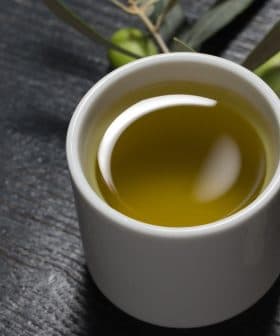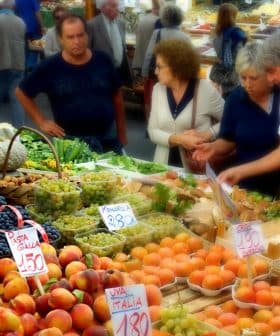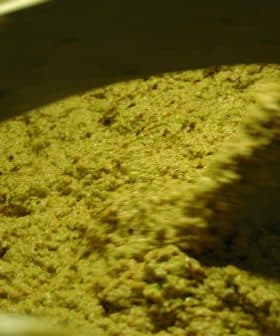New Testing Method Simplifies Elemental Analysis of Extra Virgin Olive Oil Samples
Italian researchers have developed a new method to accurately identify 45 chemical elements in extra virgin olive oil, reducing the risks of faulty analysis due to sample manipulation. The research also allows for the determination of geographical origin, anti-counterfeiting activities, and understanding the characteristics of each analyzed olive oil. The study compares different analytical approaches to achieve accurate results and reduce sample manipulation and dilution.
Researchers in Italy have developed a new method to accurately identify 45 different chemical elements in extra virgin olive oil.
According to the paper published in the journal Food Chemistry, researchers identified the best approach to analyze each element and dramatically reduced the risks of faulty analysis due to sample manipulation (the physical movement of samples from one container to another) and dilution.
Extra virgin olive oil elements present several differences from other vegetable oils, which have been used to adulterate extra virgin olive oil.
The research also paves the way for new studies on the specific characteristics of each analyzed extra virgin olive oil, including the determination of geographical origin and anti-counterfeiting activities, among others.
Self-financed by a team of four Italian scientists, the new study evaluates how different sample pre-treatment methods can be applied to distinct elements, which is the best to use for each element and what outcome may be expected.
See Also:Research News“The elemental content in olive oils is challenging to study,” Maria Luisa Astolfi, a researcher at the Sapienza University of Rome’s chemistry department and one of the authors of the study, told Olive Oil Times. “Their matrix is complex and characterized by high viscosity and organic content; moreover, some elements are present in extra virgin olive oils at very low concentration level.”
The scientists randomly chose 24 extra virgin olive oils from different brands and containers sold in several supermarkets in Rome for their experiments.
The researchers’ goal was to evaluate methods to detect known elements and explore extra virgin olive oil composition.
“We focused our research on looking for a very high number of elements within extra virgin olive oil,” Astolfi said. “Forty-five is a number that derives from previous studies and traditional content analysis. To those elements, we added the search for traces no one has ever looked for, to investigate their presence and their quantities.”
For this reason, the researchers compared different analytical approaches that allowed a more accurate evaluation of extra virgin olive oil composition.
By using ICP-MS (inductively coupled plasma mass spectrometry), researchers were able to achieve accurate and reproducible results with low detection limits for the analyzed trace elements.
At the same time, the use of this analytical technique and the research on how to apply it on extra virgin olive oil samples effectively led the researchers to reduce both sample dilution operations and manipulation.
“The way samples are treated is the main obstacle for researchers, since there lies the reason analysis might fail,” Astolfi said. “For instance, the dilution to which an overly acidic solution must be subject to be analyzed by ICP-MS and the transfer of sample from one test tube to another are operations that can compromise the result by contaminating the sample or losing the traces for which you are looking.”
Researchers went through several sample treatments and digesting solutions, which are used to analyze the samples, trying to find a compromise between the method of analysis required for each element and the time needed to execute it.
In some cases, dilution operations were avoided by identifying and applying a specific solution of diluted nitric acid and hydrogen peroxide.
“That is an example of a solution that, once in contact with the sample, does not need to be diluted to fall under the maximum acidity level that an ICP-MS can tolerate,” Astolfi said. “That also means that the sample does not have to pass from one test tube to another, significantly reducing manipulation. Working time is also considerably reduced.”
The researchers detected normal quantities of arsenic, copper, iron and lead in the extra virgin olive oil samples, all of which are commonly screened for. Meanwhile, researchers also detected calcium, cobalt, copper, magnesium, manganese and nickel in trace amounts. These six elements, along with iron, are known to impact the taste and oxidative stability of extra virgin olive oil.
“Furthermore, we also wanted to have a look at other elements to determine a more complete profile of extra virgin olive oil,” Astolfi said.
By getting a complete picture of all the elements present in a sample, scientists can better determine the geographic origin of the olive oils.
“The tree absorbs elements from the ground, which then are present in the fruit. This can tell us a lot about the land of origin,” Astolfi said. “Previous research also looked for tracking elements. We inched closer to understanding which elements can give us that information.”
However, not all elements can be evaluated with the same procedure.
“If we take barium, phosphorus, silver or tin, for instance, we could not use the new method because they need other reagent mixtures, volumes and times for sample extraction or digestion,” Astolfi said. “The main challenge is finding the most appropriate oil pre-treatment method for many different elements.”
She added that barium, chromium, silver or tin need to be digested in a warmed-up solution and will not be accurately measured with ultrasonic extraction.
“With the new method, we can assess the profile of 45 different elements and, with the comparison of the other methods of analysis, our research might help to identify which method best fits for any chemical element we are looking for,” Astolfi said.
Beyond the possibility of more accurately determining the province of olive oil and understanding its contents, new methods may also help crackdown on counterfeit and extra virgin olive oil adulteration.
“Extra virgin olive oil elements present several differences from other vegetable oils, such as seed oils, which in the past have been used to adulterate extra virgin olive oil before their distribution on the market,” Astolfi said. “Differences lie in which elements are present and their density.”
New research is ongoing to investigate the differences between organic and non-organic extra virgin olive oil and understand what differentiates Italian and non-Italian extra virgin olive oils.
“Many opportunities come up because of this new method,” Astolfi said. “We are currently investigating samples coming from all over Italy, taken by local agribusiness active in their territories, to identify their origin and tell us about their differences, what are their specific characteristics and so on.”









